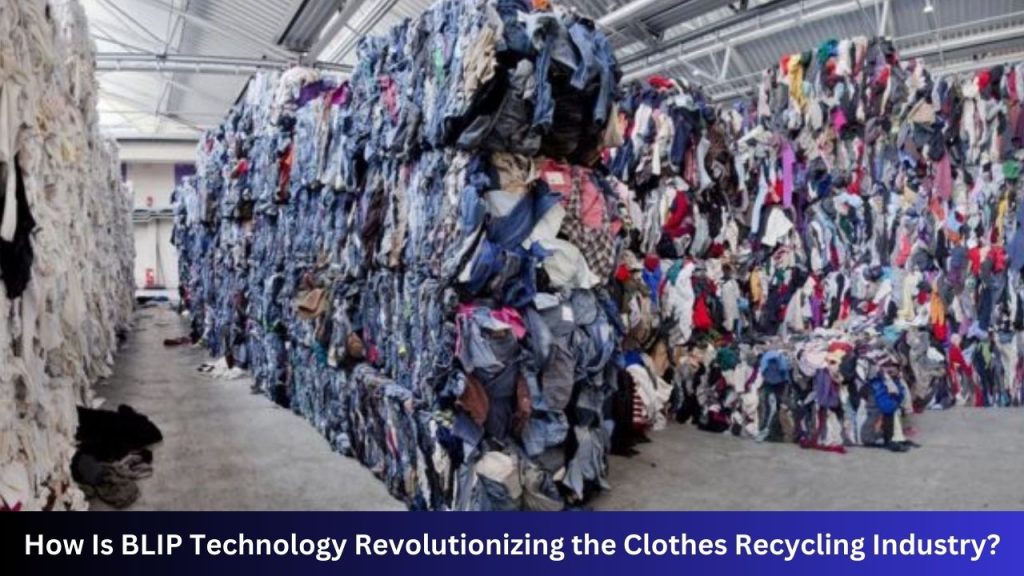How Is BLIP Technology Revolutionizing the Clothes Recycling Industry?
Lots of people are talking about how the fashion world affects the environment. They say it’s essential to start using more earth-friendly ways to make clothes. One of the most incredible new things out there is BLIP technology. It’s changing the game in recycling clothes. This way helps cut down on waste and makes fashion more eco-friendly.

The Rise of BLIP in Sustainable Fashion
BLIP technology, or Biodegradable Label Identification Process, is an excellent new way to sort clothes for recycling quickly and accurately. Traditional recycling methods often struggle to efficiently sort clothes due to the vast array of materials and blends used in their manufacture. BLIP significantly simplifies the process. Previously, determining the materials of clothes required a lot of effort.
Now, BLIP puts small, eco-friendly tags into clothes. Machines quickly understand what each piece is made from through these tags. This makes recycling clothes much simpler.
Revolutionizing Sorting with Bin Technology
The core of BLIP’s innovation lies in its use of specialized sorting bins equipped with sensors capable of reading the biodegradable labels embedded in clothing items. This bin technology is a game-changer, allowing for the fast and accurate segregation of textiles based on material type, color, and even condition.
As clothes are deposited into these bins, the embedded BLIP labels are scanned, and the items are automatically sorted, significantly reducing the manual effort required and enhancing the efficiency of recycling operations.
Enhancing Recycling Efficiency
BLIP technology is changing the game in recycling by making sorting super accurate. This means recycling gets done faster, and the quality of recycled textiles goes way up. Before BLIP, sorting was done mainly by hand, sometimes by mixing the materials.
This mix-up could lower the quality of recycled stuff. But with BLIP’s intelligent sorting, this problem is solved. We get better-recycled textiles that can go back into making new clothes. This helps keep fashion sustainable by reusing materials instead of needing new ones.
Reducing Environmental Impact
One of the most significant advantages of BLIP technology is its potential to reduce the fashion industry’s environmental footprint. BLIP makes it easier and quicker to recycle clothes so that more people can recycle them. This cuts down on the need to make new materials from the start.
Creating fewer new materials means less harmful emissions and saves water, which is better for our planet. Plus, BLIP’s labels break down naturally, so they won’t pile up as waste. BLIP helps care for the environment by sticking to green principles.
Catalyzing the Shift Towards Circular Fashion
BLIP technology is not just a tool for recycling; it’s a catalyst for the broader adoption of circular fashion practices. BLIP simplifies recycling, making it easy for brands to use recycled materials in what they make. This helps move away from the usual “take, make, throw away” approach.
It’s all about creating a better fashion world for the planet. Here, people use things more wisely, and clothes last longer.
Recycling clothes with BLIP tech is fantastic for the environment. It simplifies recycling and makes it super accurate. So, it’s better for the earth and cuts down on waste. As BLIP tech improves and more folks jump on board, fashion could become more eco-friendly.
BLIP tech is beneficial for the planet and reduces trash. It proves new ideas are crucial to hitting our eco-friendly targets. Fashion will evolve with BLIP, making our future cleaner and more green.
In today’s world, where it’s important to be eco-friendly, tech like BLIP lights the way. These new gadgets and ideas help make industries that usually harm the environment more eco-friendly. Watching these tremendous innovations improve makes a green future possible.
The way they’re changing clothes and recycling is a big deal. It shows that a cleaner and greener future is possible with the right tools and effort.